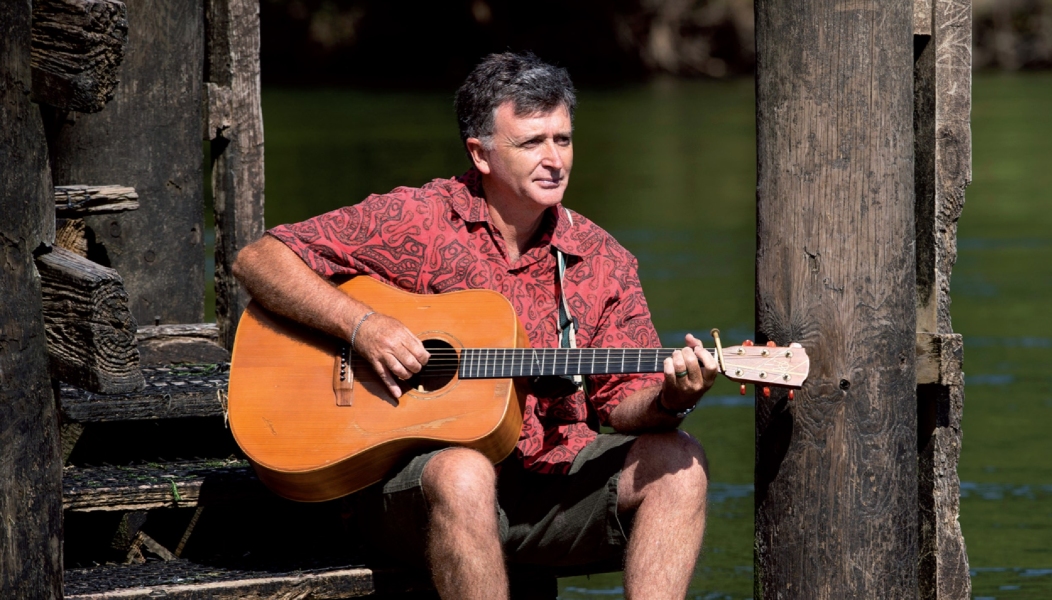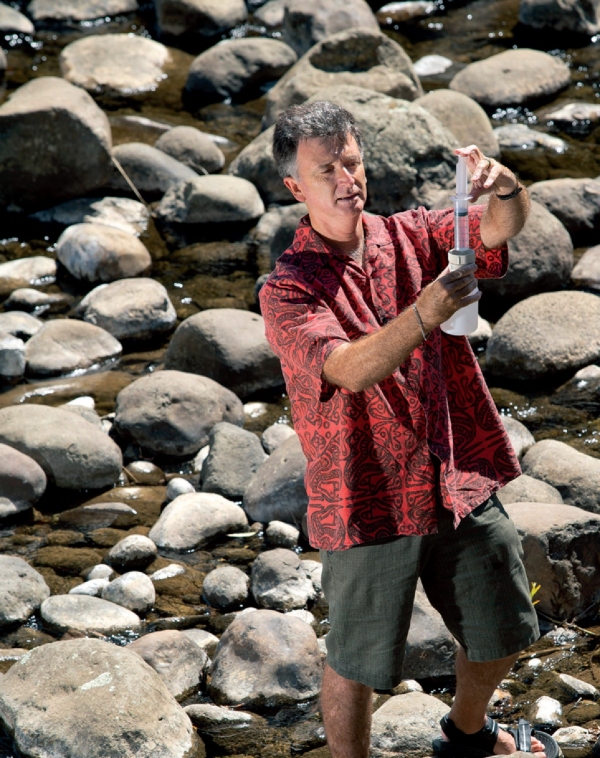For river specialist John Quinn, science, society and songs are an easy confluence, he tells Dave Hansford.
John Quinn swam his first five strokes in the Tukituki when he was five years old. Today, 50 years later, he’s back, but this time he’s here as a NIWA Principal Scientist, striving to fathom its watery workings. “Rivers take you along with them,” he says. “Learning to understand their processes better is a lot of fun, especially in places you’re attached to.”
His return to the Tukituki, he says, “is a really special circle of life". He was born not far from here: in Waipukurau, the son of a rural GP, and went to Central Hawkes Bay College. “For a while, it looked like I was going to be a country doctor myself,” but Jacques Cousteau intervened. “I was one of that generation of kids captured by what he showed us about the undersea world.”
Quinn took up diving and, during his time at Otago University, he thought about a career in the sea – but somehow, he always ended up back on a riverbank somewhere: they became a spiritual and cerebral touchstone, and his place of work. “It seemed to me that fresh water offered more opportunities to interact with people, and I’m fascinated by the land/water interaction – I’ve always been interested in trying to resolve the problems of land use and fresh water.” During the bullish days of Think Big, Quinn thought small – sometimes microbial. “Unlike others, my interest was in not damming rivers, but in those days a career as an aquatic ecologist was unheard of.”
In the early 1980s, he did a PhD at Massey University, studying the waterway that was to become stigmatised as one of the most polluted: the Manawatu River. In those days, he recalls, towns simply piped primary treated sewage (at best), dairy factory and meat works effluent into the river, which laboured brown and sluggish through vast tracts of “sewage fungus” – a slimy medley of bacteria, fungi and protozoa. Fish routinely died from oxygen depletion.
For the last 28 years, Quinn has been based at NIWA’s Hamilton office and, over that time, he’s seen “a material change” in our attitudes to water: “Farmers, especially, are much more aware of the impact of their practices. There’s lots more riparian management, and many fewer dairy shed effluent discharges to streams. NIWA’s played a role in that: our information gives people confidence to change the way they do things, which is an important part of what scientists do.”
Also, he says, Māori have brought a vital new dimension to the national conversation. “Maori can talk about their feelings around water in ways we Pakeha struggle with: ‘If the river is healthy, the people are healthy’, ‘I am the river: the river is me’ – that sort of thing.” That cultural imperative isn’t new, he points out, “it’s just that Maori have more opportunities to express it these days, and it’s a very powerful way to do things positively. If you stop to think about it, most of the major (freshwater) restoration projects have been driven by the treaty settlement process".
A feeling of being at the epicentre of perhaps our most momentous resource issue keeps Quinn energised. “Water is fundamental to life, so you feel like you’re working on one of the most important solutions of all. It seems like it’s our time at the moment, and that’s exciting – it’s a sweet spot to be.”
Like all social dilemmas, freshwater issues come in myriad shades of grey: “The issues are very complex, so the answers aren’t simple.” But there is, says Quinn, a bottom line that shouldn’t be negotiable: “People need to be able to make a living, but, in the end, it’s a sustainability argument. Future generations are entitled to that very same right, and we can’t stuff that up for them.”
Reconciling farming and fresh water, he says, will be crucial. His contribution, he hopes, will be “to better predict how habitat restoration and nutrient management protect or restore the values people have for rivers,” which will help us better understand the many ways our actions dictate the fate of fresh waters. He also wants to help develop “watersensitive” farm practice guidelines “appropriate for different settings around New Zealand, that will match sustainable farming with healthy rivers, lakes and estuaries".
He’s unfazed by the size of the challenge: “Yes, there’s a juggernaut of development, and getting behavioural change is tricky. But there’s also a real willingness to get this sorted, and a community coherence in New Zealand that means we can do it. The scientific community is small and closeknit, which fosters collaboration. There’s a big crossover in understanding, so people can blend their skills and take these things on together.”
Every river is different, says Quinn – some even transform reach by reach. “They each have their own distinctive character, their own combination of scent, sound, species and form that combine with the surroundings – and cultural history – to give a unique feeling. The more you get to know a river, the more that individuality emerges.”
For a small place, he says, New Zealand has an amazing diversity of river types. “Within 100 kilometres of Hamilton, we have the very stable-flow, spring-fed rivers with U-shaped channels like the upper Waihou, and on the Coromandel, rivers like the Opitonui with a highly flashy flow with wide channels and strong riffle-pool sequences. Elsewhere, we have everything in between – it’s a researcher’s paradise. I think that’s a big part of why I never left New Zealand.”
When he’s not wading about in rivers, Quinn likes to play guitar. “I’ve always liked having some artistic stuff in my life, and I think it helps my scientific creativity too. I did painting classes for ten years, but I was always more interested in music. I’m in a folksy-poppy band with some other scientists. I’ve dabbled in songwriting, so we do a mix of covers and originals.”
He sometimes kicks off a science presentation with ballads like 'I’m a river for you' and 'Migrating salmon blues'. “Logic and Powerpoint can go so far, but I’ve found a bit of melody and quirky humour can help win over a tough audience."


